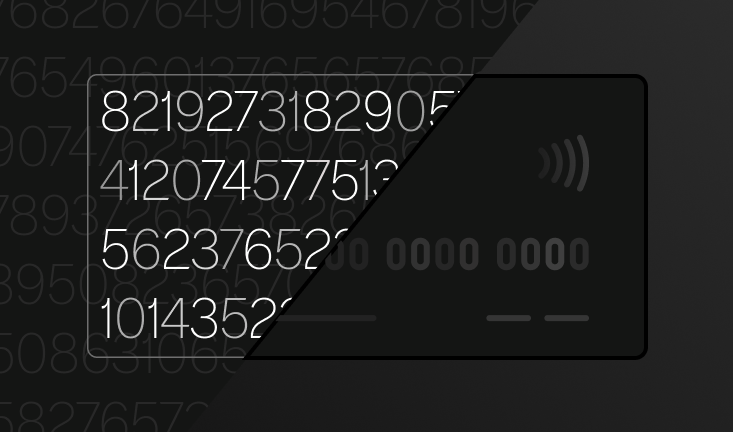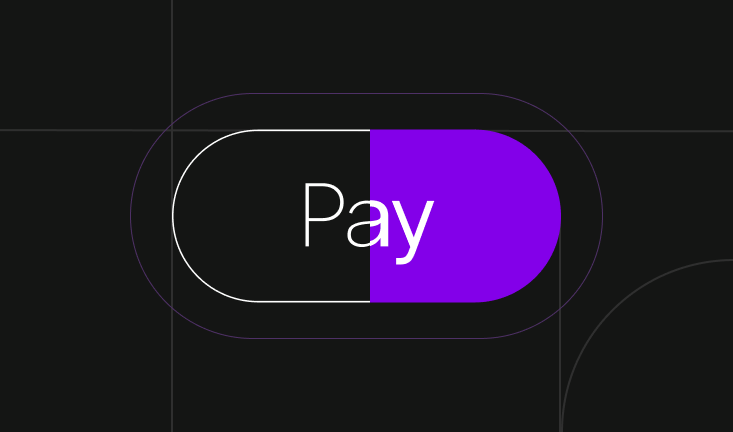Your checkout knows more about you than you think. See how smart data is turning boring payment pages into powerful conversion machines tailored just for you.

Your checkout knows more about you than you think. See how smart data is turning boring payment pages into powerful conversion machines tailored just for you.
For years, e-commerce merchants have fought an uphill battle to gain more control over their checkout pages. They crave a branded checkout experience that seamlessly melds with their store’s identity – something that doesn’t just process payments but enhances brand consistency, builds customer trust, and drives loyalty.
In fact, 76% of e-commerce businesses say they’d like more control over checkout customization. And they aren’t just stirring the pot for fun. They’ve got real reasons to want a checkout that’s uniquely theirs. Most importantly, it is the final touchpoint in the customer journey, a critical moment to make a lasting impact.
Yet, traditional payment gateways have dug in their heels, offering merchants a frustrating ultimatum: settle for a generic, cookie-cutter checkout that feels detached from their brand or fork over steep fees for even the simplest personalization. This has forced countless businesses into costly third-party workarounds that drain their time, resources, and patience.
The lack of payment gateway personalization is a slow bleed on your bottom line. Generic checkouts carry hidden costs that compound over time:
Even Stripe admits it – a branded checkout “serves as a constant reminder of the brand’s identity” by reinforcing visual cues that cement brand memory. A disjointed checkout doesn’t just confuse – it erases your brand from the story. Customers may be left with no mental link tying their purchase back to you. This can hit loyalty and reduce your repeat business.
When customers are redirected to a plain or third-party payment page that looks different, it can raise security concerns. Studies show that 25% of shoppers have abandoned their carts over this, not trusting the site with their credit card details. A customized, familiar-looking checkout helps signal authenticity and security so they remain confident enough to click “pay.”
Loyal customers are incredibly valuable. Returning shoppers spend 3 times more than one-time shoppers on average and drive about a third of total revenue. If the checkout experience isn’t memorable or trustworthy, you risk losing out on these high-LTV customers.
Then there’s the ripple effect. Merchants often turn to third-party tools to bridge the gap, racking up subscription fees, integration costs, and maintenance headaches. For a mid-sized retailer, these expenses can cut into budgets, money that could’ve gone to marketing or product development.

Why is something so fundamental to e-commerce success still so elusive? Unfortunately, the resistance from giants like Stripe, PayPal, and Adyen isn’t really arbitrary. It’s rooted in a mix of practical constraints and business strategies.
Payment gateways are purpose-built to handle sensitive customer data. They follow strict PCI-DSS (Payment Card Industry Data Security Standard) rules to ensure that every bit of card information is encrypted, tokenized, and transmitted securely.
Customization introduces risk. If a merchant modifies the checkout’s UI or injects custom code, they could risk disrupting the secure payment architecture and creating vulnerabilities. For example, moving or modifying tokenization workflows might expose raw card data or bypass fraud checks.
Gateways prioritize compliance over merchant flexibility, locking down the checkout process to protect themselves from fines and costly security breaches. It’s a valid concern, but it leaves merchants with little room to maneuver.
Payment gateways often resist offering merchants leeway with checkout customization because they believe their pre-set flows are already optimized for success, and merchant changes tend to hurt conversions.
Consider a merchant who insists on adding a promotional banner to the checkout page. It might align with their brand, but if it distracts users or slows load times, abandonment rates may climb.
For many gateways, personalization isn’t impossible – it’s just expensive. Custom checkout solutions are often dangled as a premium feature, locked behind enterprise plans or hefty fees. If you want a branded checkout, you’re going to have to open your wallet. With Stripe Checkout, full customization can run you $50,000 or more a year.
These costs are prohibitive for small to mid-sized businesses, effectively shutting them out of personalization altogether. 64% of merchants have ditched a payment provider over restrictive branding policies. For gateways, this paywall strategy boosts revenue, but it alienates a huge swath of their user base.
Payment giants toss merchants a few customization crusts to try to keep them happy, but they all prioritize security by limiting structure changes. You can add some branding flair or select payment options, but don’t expect to rearrange the entire checkout experience.
| Aspect | What you can do | Examples |
| Branding | Add logos, colors, and fonts to match your store’s style. | Stripe matches site themes, and Shopify adds background images. |
| Payment methods | Enable or disable payment methods like PayPal or Klarna based on your customers’ needs. | Available for all major providers. |
| Custom fields | Add limited inputs for extra information. | Stripe allows three fields (e.g., delivery notes), Adyen uses API for order notes. |
| Language | Set or auto-detect languages for the checkout. | Shopify offers 20+ options, Adyen supports 40+ translations. |
| Policies & info | Include return policies or contact details. | Add refund terms with Shopify. |
| Aspect | What you can’t do | Examples |
| Branding | Fully remove the provider’s branding from the checkout. | “Powered by Shopify” or Adyen’s hints stick around. |
| Payment methods | Determine the order in which payment methods appear. | This is decided by the provider’s algorithm. |
| Custom fields | Custom inputs are capped. | Stripe limits to three fields, no SSNs allowed. |
| Layout | Rearrange fields or buttons in prebuilt checkouts. | All major providers lock layout control. |
| Access level | Get deep customization without premium plans or coding skills. | Shopify Plus or Adyen’s API is needed for more control. |
Most payment gateways box you in. Krepling Pay is different. It hands you a checkout you can totally customize and make your own.
Krepling Pay offers a fully white-labeled checkout experience without any extra fees or pricey enterprise plans. Merchants can customize colors, fonts, logos, and layouts to match their store perfectly, creating a cohesive journey from cart to confirmation.
Now, before you go wild – you can’t change every single thing, but that’s by design. We’ve spent 12 years digging into 37,200+ checkout sessions across industries, covering millions of data points to build a checkout experience that converts.
By restricting changes to the underlying core checkout logic, Krepling Pay prevents merchants from introducing friction that could derail conversions. These are guardrails that keep security, compliance, and load times in check, but you retain full UI flexibility for complete branding control.
Merchants get a checkout that feels custom but runs on a proven data-driven engine that’s built with insights pulled from over 19,000 UX case studies. Krepling evaluated its checkout flows across 17 experience categories, including:
Most gateways offer static checkout flows, no matter who’s on the other side. First-time buyers and return customers all get the same experience. But Krepling Pay adapts subtly to users without crossing privacy lines:
Krepling Pay’s white-labeled one-click checkout increases the checkout completion rate by 31% when compared to standard payment gateways. By integrating advanced personalization techniques with robust security, Krepling Pay streamlines the transaction process while building trust with consumers.
The final step of the customer journey has needed some changes for a while. When so many shoppers abandon their cart as soon as they land on the checkout page, it’s clear that something isn’t working. Payment gateways have long monopolized control over merchant personalization, all in the name of optimization, but Krepling Pay proves that flexibility and optimization can coexist.
In the coming years, checkout experiences will evolve to be smarter to meet customer and merchant demands:
For too long, merchants have been shackled by payment gateways that dangle personalization like a carrot – either out of reach or priced to bleed you dry. The hidden costs of these de-personalized checkout flows are eating away at your business every day. But it doesn’t have to be that way.
Krepling Pay gives you a truly data-driven checkout experience you can fully white-label. With no additional fees, you get the freedom to customize branding to seamlessly match the rest of your store. By leveraging data responsibly, Krepling personalizes without prying, setting a new benchmark for the industry.
Your checkout knows more about you than you think. See how smart data is turning boring payment pages into powerful conversion machines tailored just for you.
Learn how Krepling Pay can power your business—whether you’re enhancing your existing checkout or launching a fully embedded, end-to-end retail experience.